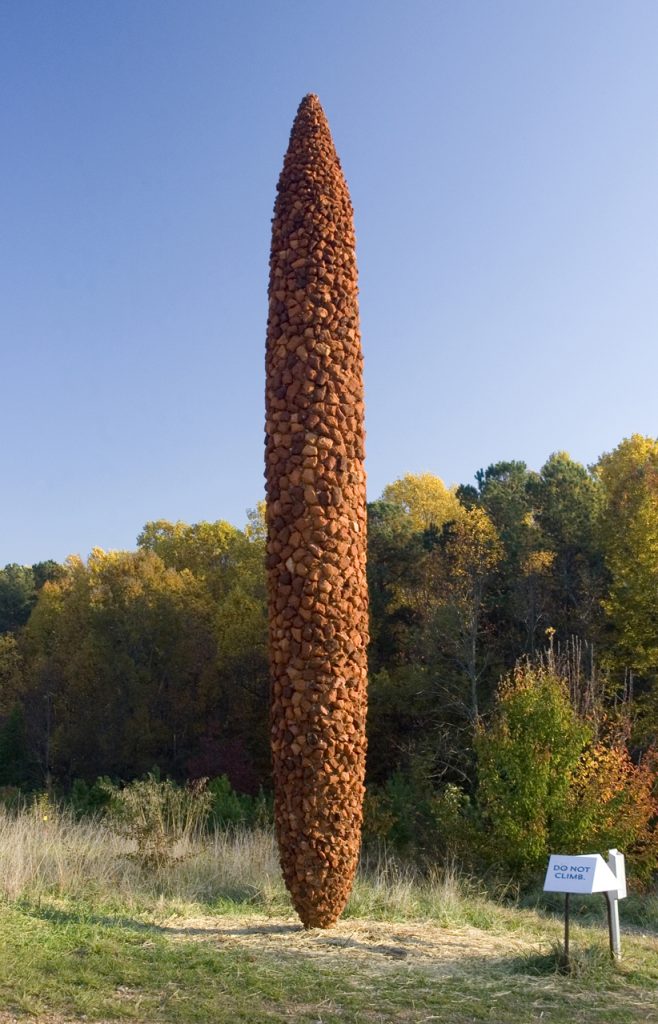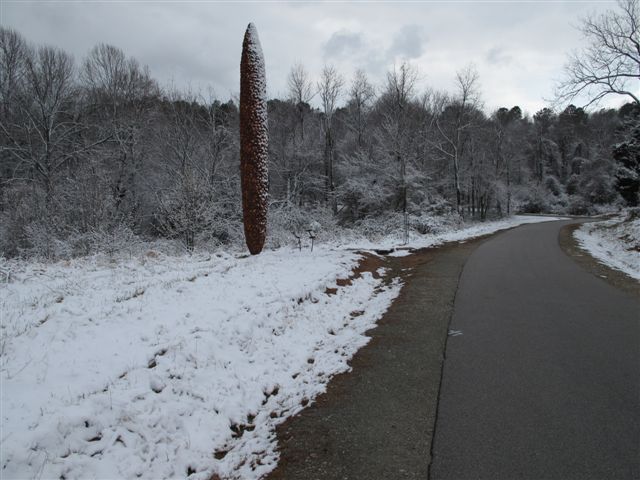Crossroads/Trickster I (work of art)
Artwork Info
Key Ideas
- This site-specific sculpture marks the intersection of two trails in the Museum Park. It was created especially for this location.
- The sculpture combines brick fragments with Italian glass tiles and carnelian stones.
- The brick pieces were part of the prison that once occupied a large area of what is now the Museum Park. The bricks were made by hand by the inmates who built and lived in the prison.
- Martha Jackson Jarvis is an American artist who is best known for her mixed-media installations. Her work often represents changes that have taken place over time.
- Jackson Jarvis considers the prison bricks in her modern sculpture to be “time capsules” that honor the history of the land on which it stands.
Learn More
Martha Jackson Jarvis was commissioned to create a site-specific work of art for the NCMA in the early 2000s. When she first visited the Museum to discuss ideas about the project, she learned about the upcoming demolition of Polk Youth Center (youth prison). The empty prison buildings were still standing on land owned by the Museum. Jackson Jarvis decided to use bricks from the former prison in her sculpture. This decision paved the way for Crossroads/Trickster I. The sculpture is a modern monument made from the debris of the past. It combines shattered bricks with Italian glass tiles and carnelian stones.
Jackson Jarvis is a contemporary mixed-media artist known for her sculptures, mosaic works, and public art installations. She lives and works in Washington, DC. When she was born in Lynchburg, Virginia, in 1952, segregation was still a way of life. Her work acknowledges the changes that have taken place during her lifetime, including civil rights activism, family deaths, and artistic movements.
My work engages issues of identity and symbols of belief that confront us in contemporary life yet are firmly rooted in historical traditions and culture.
Martha Jackson Jarvis
Crossroads/Trickster I acknowledges the history of the Museum Park land and the changes that have occurred here over time. Beginning in the 1920s, the land that is now the Museum Park was the site of a state prison farm. It later became a men’s prison. The prisoners made bricks during their time there, and those bricks were used to build the prison buildings. When the men’s prison was moved to another location, the facility was used as a youth prison. Polk Youth Center was in operation from 1963 to 1997. It was relocated to Granville County in 1997.
Today the smokestack beside the Museum Park Welcome Center is the only remaining structure from the former prison. The bricks that are now part of Crossroads/Trickster I were not only made on this land, they were made by people who lived on this land.
Additional Resources
Resources for Teachers
- Read an article about Martha Jackson Jarvis and her process.
- Read an article about an exhibition of the artist’s work.
- Watch a video about the artist.
Resources for Students
- Read Martha Jackson Jarvis’s artist statement.
- View a virtual gallery of works by the artist.
- Watch a video clip of the artist explaining one of her works.




